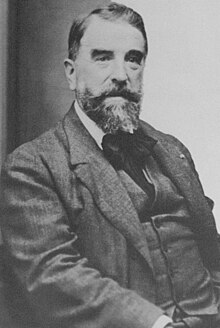Miquel Blay i Fàbregas
| Miguel Blay y Fàbregas | |
|---|---|
 |
|
| Born |
October , 1866 Olot, Spain |
| Died | 22 January 1936 (aged 69) |
| Occupation | Sculptor |
| Movement | Modernisme |
Miguel Blay y Fàbregas (in Catalan, Miquel Blay i Fàbregas) (in Olot, October 1866 - Madrid, January 22, 1936) was a Spanish sculptor.
Blay was born in the city of Olot, in the province of Girona to a humble family. He begins his formal education in the Municipal Drawing School and the studio of El Arte Cristiano where he was a disciple of Josep Berga i Boix and the painter Joaquim Vayreda. In the studio of El Arte Cristiano he drew and painted various Christian pieces. At the end of 1888, he receives a grant from the provincial government of Girona to study in Paris.
In Paris he studied at the Royal Academy of Fine Arts and at the Academie Julian under the sculptor Henri Chapu, whom Blay credits to having a large influence on his sculpture. Blay leaves Paris for a few months to study in Rome and return to Olot. In 1890 he wins a gold medal in the Universal Exhibition in Paris and the following year is named knight of the French Legion of Honor. In 1892, Blay competes in the National Exposition of Fine Arts and wins first prize for his work Los primeros fríos. The piece was also awarded a gold medal in Barcelona in 1894.
In 1906 Blay moves to Madrid, the city in which he resides until his death. In 1908, he wins the medal of honor at the National Exhibition of Fine Arts in Madrid for his work Eclosion, for which he had won a great diploma of honor in Barcelona the year before. In 1909 he is selected as member of the Real Academia de Bellas Artes de San Fernando. From this year on, he becomes a professor at the Special School of Fine Arts in Madrid. From 1925 to 1932 he becomes the director of the Academy of Fine Art in Rome.
Blay died in Madrid on January 22, 1936 seven days after a stroke.
Los primeros fríos:
There are two versions of this piece, one in marble and one in bronze. The marble version can be found at the MNAC in Barcelona, while a bronze version can be found at the Museo Regional de la Garrocha, in Olot. The two versions mark two different periods of his sculpture. The marble version is idealistic, focusing on the contrast in detail between the wrinkled skin of the old man and the smooth, tight skin of the young girl. The bronze version is more influenced by the works of Rodin, and is a synthesis of realism as well as the emotion evoked by the two characters. Its modernist technique influenced an entire generation of Catalan sculptors.
...
Wikipedia
